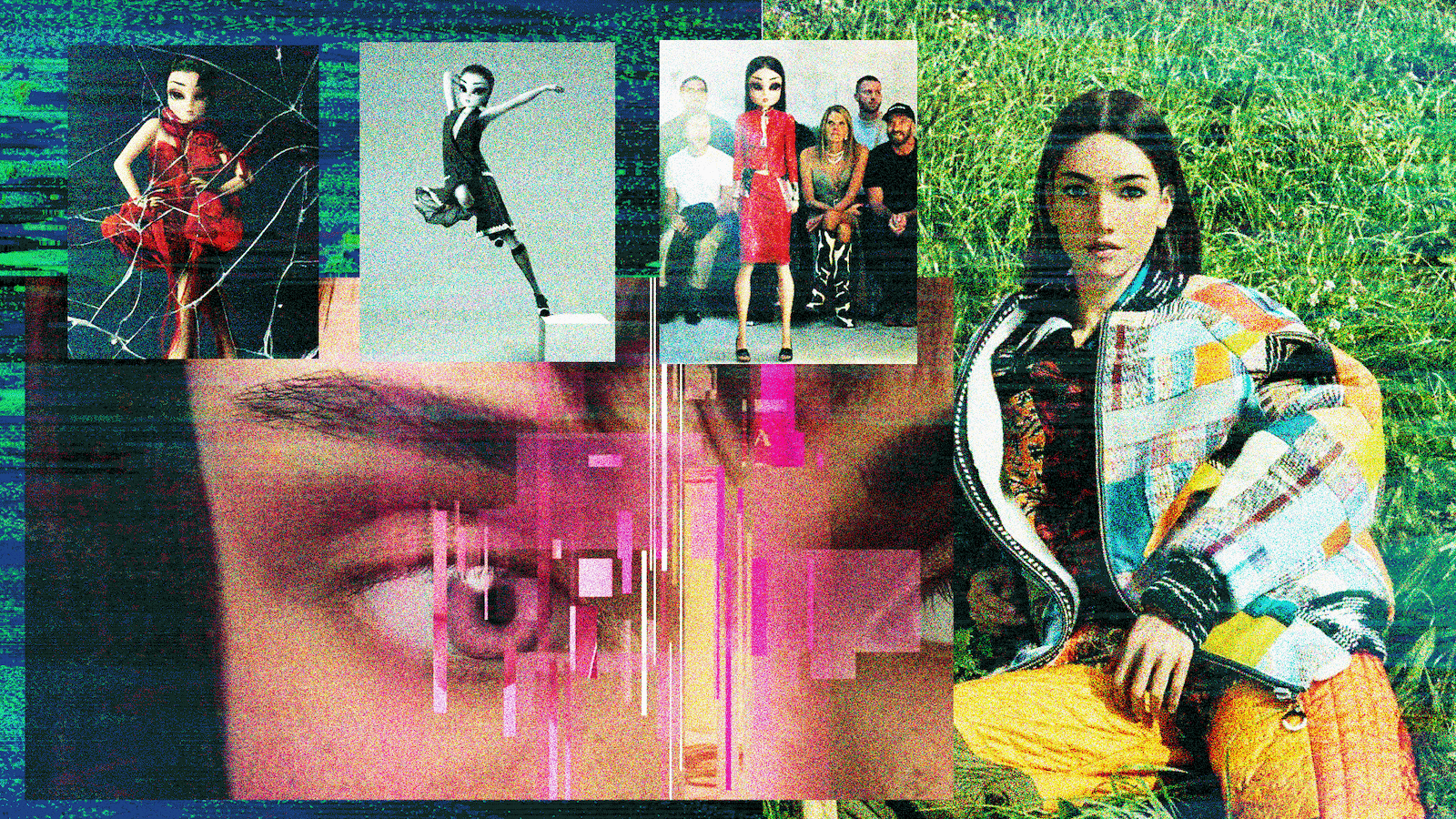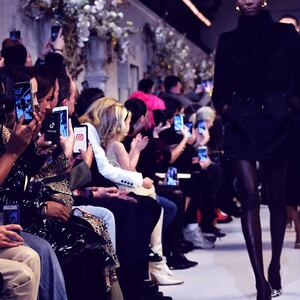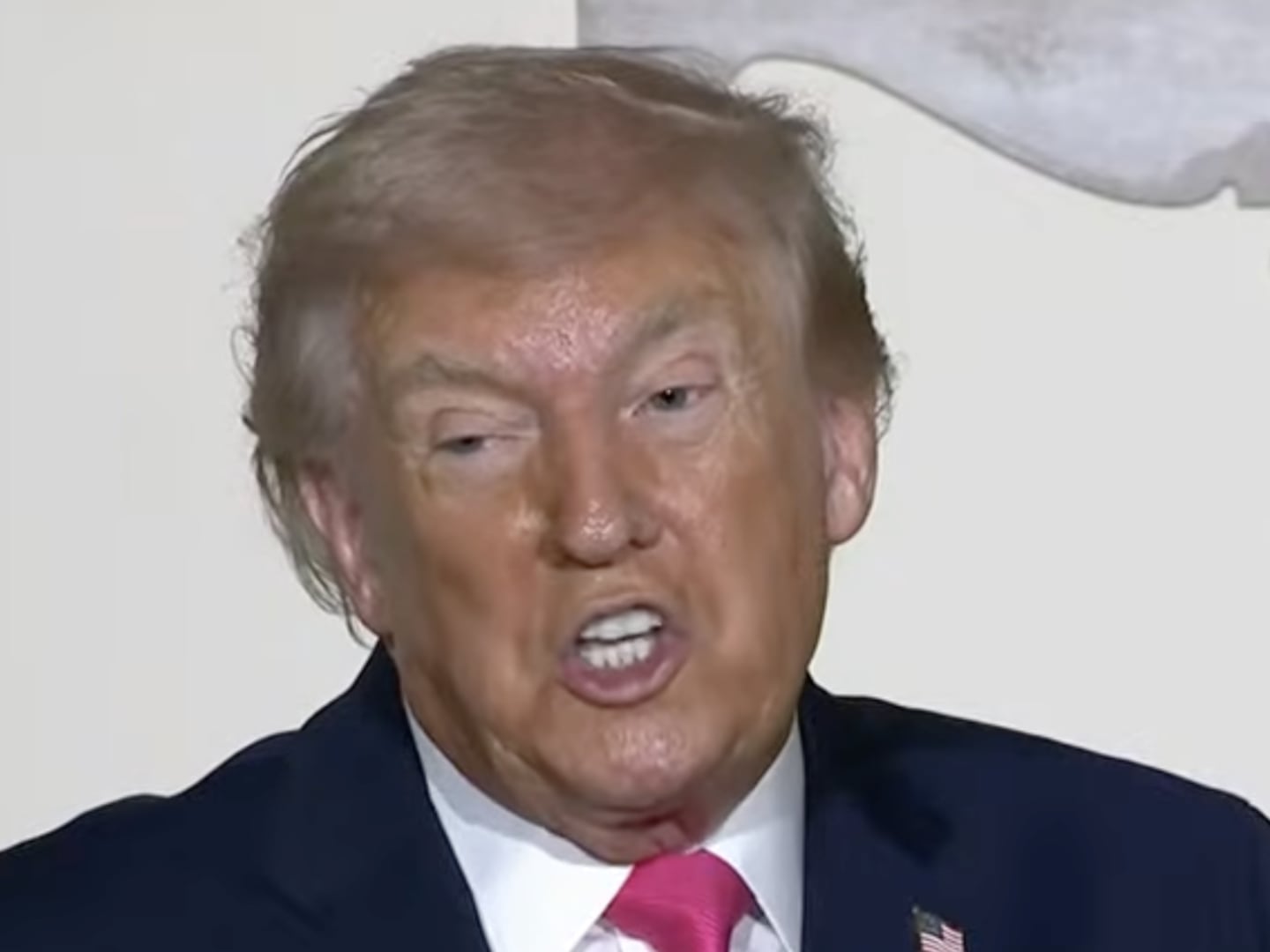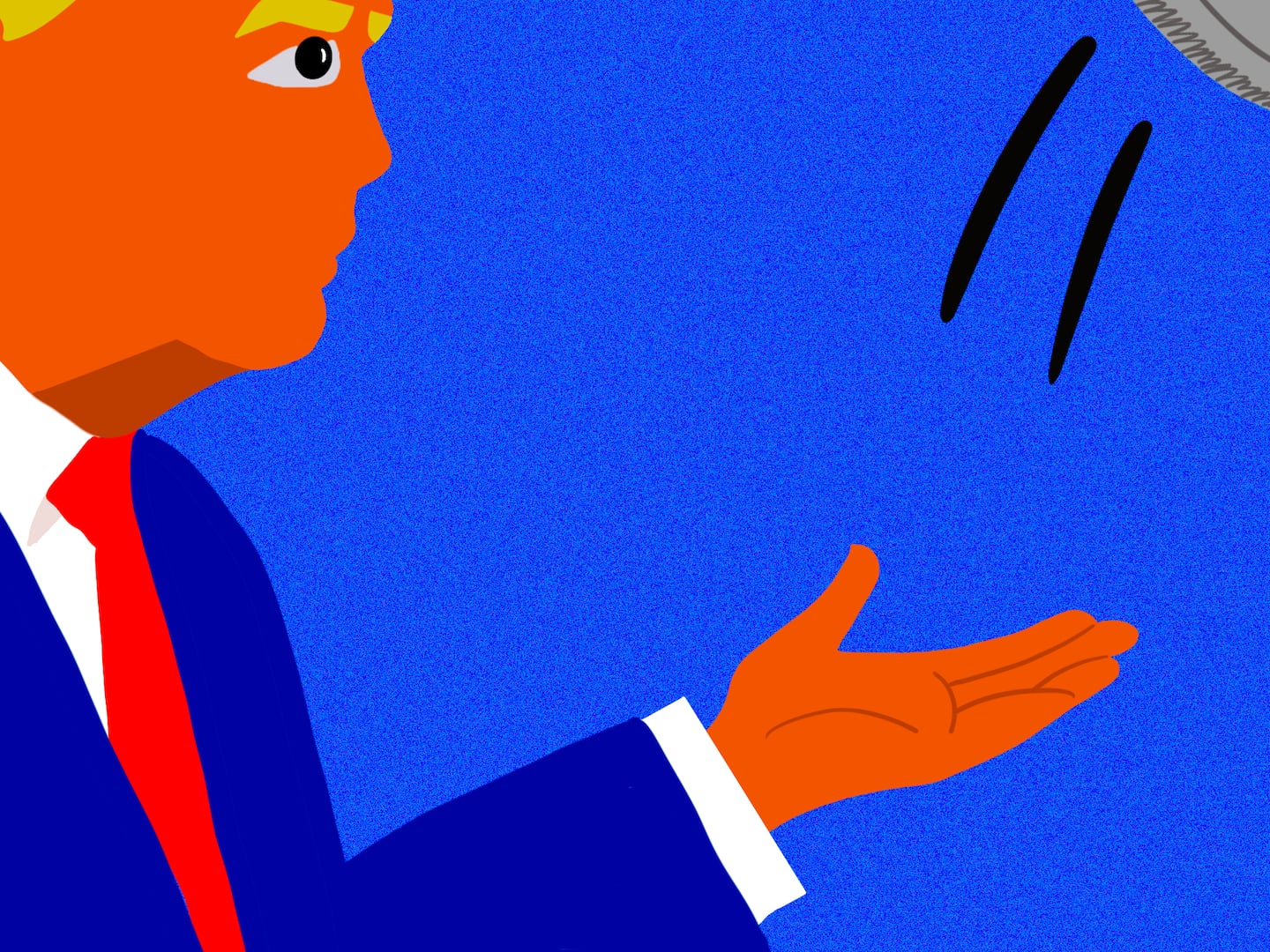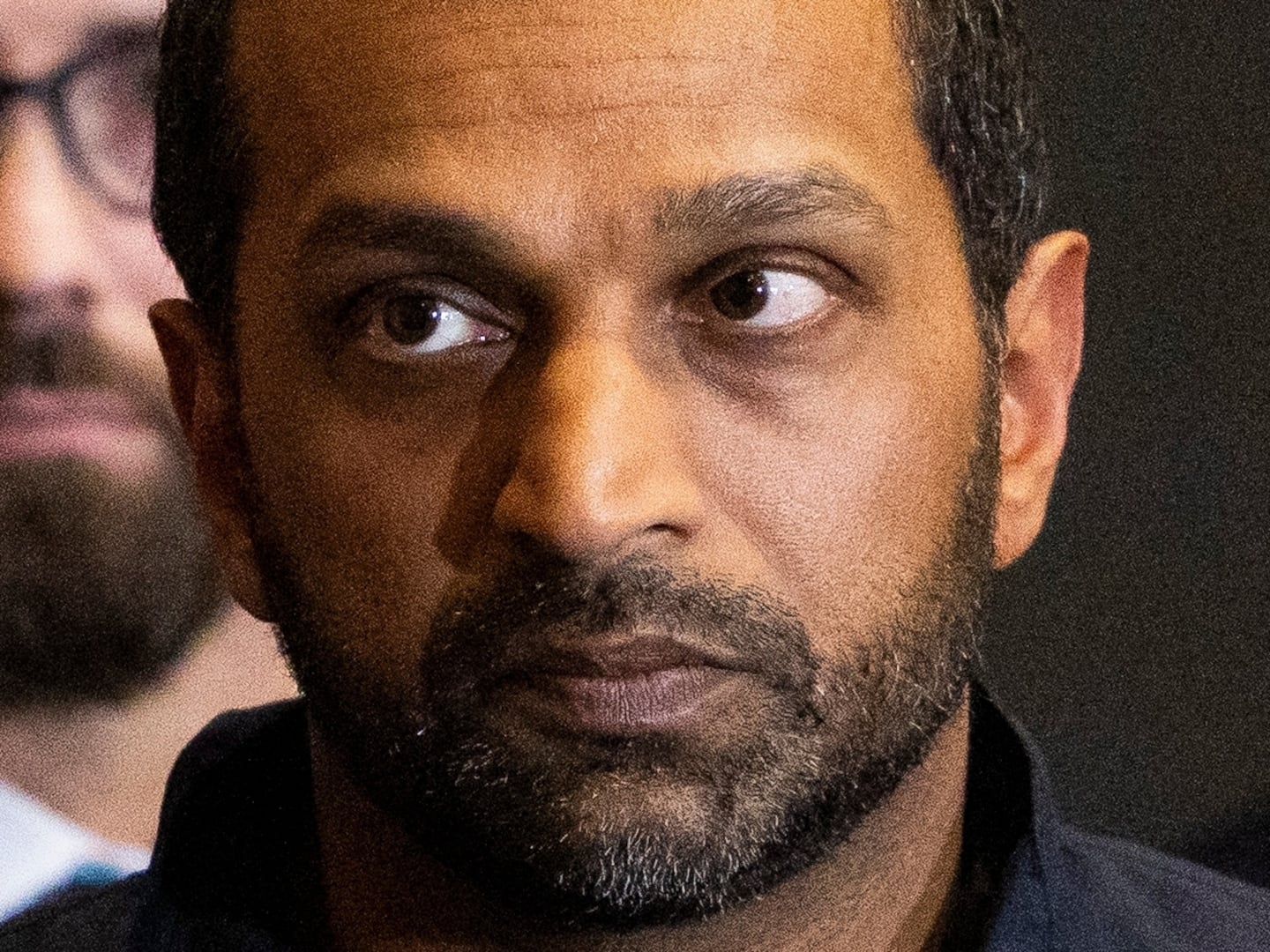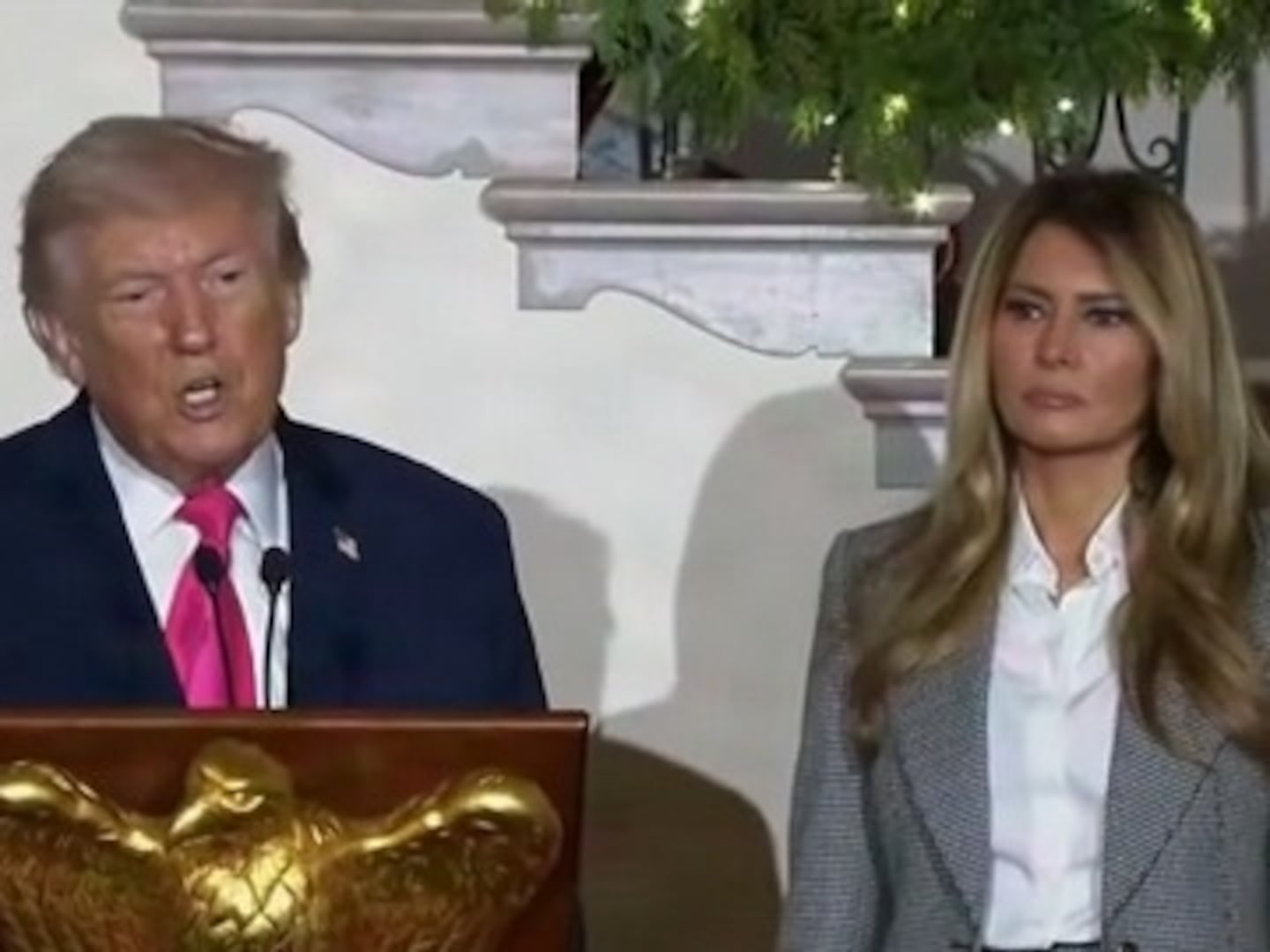At first sight, social media influencer Noonoouri’s Instagram bio and follow count reads as your typical young, progressive influencer. She’s got over 400,000 followers on Instagram, describes herself as cruelty-free, and is also signed to IMG Models, one of the top modeling agencies in the world. She’s in fashion campaigns and has the wardrobe a million girls would die for, but amazing as she is, she isn’t real.
This doesn’t mean not real in the sense of how influencers’ social media feeds are typically the most glamorous parts of their lives. Noonoouri is a virtual influencer, making her an AI product, so she is, in a sense, an imaginary friend come to digital life.
While this might sound crazy to some, the fashion industry loves Noonoouri. She’s promoted products for major luxury brands, like Versace and Balenciaga. She’s even gone viral for wearing archival pieces from brands, including Alexander McQueen and Thierry Mugler.
Then there’s Rae, a virtual influencer who has entered the fashion industry by wearing logoless pieces. To date, Rae has worn clothes for Nike, Rhude, and Zara. Rather than making it a point that she is making a fashion post, Rae incorporates her wardrobe into her everyday life. She is seen doing everything from skating to getting coffee. It’s easy for consumers to connect with Rae even though she isn’t flesh and blood because they can put themselves in her everyday shoes.
Virtual influencers in fashion are rising in influence and presence. E-commerce company Yoox, under the Yoox-Net-a-Porter umbrella, has created Daisy. Unlike other virtual influencers, Daisy doesn’t have her own social media but lives purely in Yoox’s world and Instagram feed. Daisy has become the ultimate company spokesperson for Yoox in that she can never cause any controversy and she’s completely under their control from image to presentation.
Prada also realized the benefits of having its own virtual spokesperson when launching its Candy fragrance. To help launch the fragrance, rather than just getting traditional campaign models or brand ambassadors, they created Candy, respectfully named after the fragrance. Candy’s purpose as an influencer was to help the brand reach younger audiences, and while it’s unclear as to how much further Prada plans to take Candy as their virtual influencer, the option to use her is always there.
Lauren Beitelspacher, an associate professor of marketing at Babson College, said brands are turning to virtual influencers because “sometimes influencers can lose some of their luster, whether they are involved with scandal or controversy, or make disparaging remarks. With a virtual influencer, brands can control the narrative a bit more. Additionally, with everything being computer generated, it’s easy to change the scenery, the layout, and the fashion. Virtual influencers give their brand partners more flexibility.”
How do they relate to real-life influencers, who have come to rule the front rows of Fashion Weeks and promote many products from Fashion Week brands? While virtual influencers have played a role at Milan and Paris Fashion Week, in New York and American fashion they have been primarily utilized for digital and print ad campaigns along with social media promotions. As designers try to take New York Fashion Week into the next decade, there’s the question of how to do so, and virtual influencers could be one answer.
Eric Dahan, CEO of influencer marketing firm Open Influence, said: “I think in some select cases virtual influencers will replace the gravitas of human influencers. In most cases though, there’s no substitute for the authenticity of an actual person. Virtual influencers allow brands to tailor-make the perfect spokesperson that will never age, ask for more money, or misbehave.
“Right now, true virtual influencers are a novelty, and consumers treat them as such. But what most people don’t realize is that there is very little difference between popular meme accounts that are faceless and virtual influencers. I think what is key is that people have trust in the person or team behind a virtual influencer, even though they won’t know who that person or team is.”
Some are not convinced that virtual influencers have any space in a sphere like New York Fashion Week or even the fashion industry.
Samantha Scarlette, an influencer who has attended New York Fashion Week in the past, said, “There’s a difference between usual actual celebrities with career achievements who are actors, musicians, and athletes to promote a product and get attention at New York Fashion Week and virtual influencers. Using virtual influencers just perpetuates the mediocre state of American culture which rewards those without merit. Any brand using virtual influencers to promote their show during New York Fashion Week is cheapening their brand.”
She added, “Most people with disposable income who buy high-end fashion brands shown at New York Fashion Week are not impressed or swayed by virtual influencers. They just wouldn’t impress an Upper East Side society woman. A virtual influencer would overshadow the clothes, they should not be used at Fashion Week.”
Her sentiments were echoed by stylist Nolan Meader, who has styled front-row attendees at New York Fashion. “Why would a brand be dumb enough to pay to put someone that’s not real to wear something?” Meader said. “Not once have I ever watched a cartoon and said ‘I would love to have that cardigan they’re wearing.’”
Some experts believe that if virtual influencers are really to become a force to be reckoned with, they have to figure out how to appeal across multiple generations.
“I think the bigger question is if the market is moving to a point where virtual influencers can gain traction in multiple target markets,” Anjali Bal, an associate professor of marketing at Babson College, said. “The gravitas of any influencer, in any market is granted both by experts in that field and consumers within it. Functionally, this means to gain the same level of gravitas, the virtual influencers must start appealing more substantially to people of multiple generations.
“Virtual influencers are gaining traction with digital natives, like Generation Z and some millennials, but are still largely insubstantial with other generations. It stands to reason that virtual influencers will also gain traction with younger generations as they get older.”
Bal added, “There will be a time where what is considered ‘real’ will change by virtue of the metaverse, and digital native aging, opening the door for virtual influencers to increase their impact. But, I don’t believe they will ever replace real influencers, more likely exist alongside them. To date, virtual influencers have not gained widespread acceptance on the market. Many people don’t even know what they are.”
Of the benefits of virtual influencers, Christopher Travers, founder of VirtualHumans.org, said, “[Virtual influencers] never age, they never die, they live scripted yet human lives, they are brand safe, they speak to a generation who values anime and gaming, and from a fundamental standpoint, their 3D models can be managed by many parties, which allows this image to make dynamic appearances in commercials, on social media, live on stage, and in other places all at once.”
Todd Bacile, an associate professor of marketing at Loyola University New Orleans College of Business, believes that virtual influencers are a natural evolution of technology, media, and branding.
“Brands may want to work with virtual influencers because it may be something that is efficient with resource,” Bacile said. “Artificial intelligence makes it possible for a virtual influencer to intelligently interact with hundreds or thousands of customers at the same time. Now, this would be something that would need to be set up ahead of time, but I can see the benefits of A.I. and virtual influencers to engage in one-on-one interactions with the masses.”
He added, “Regarding authenticity, I don’t think a virtual influencer would lose authenticity as long as it was consistent with what a brand stands for and represents. Tangible fashion brands have nothing to lose if they want to use virtual influencers, as long as customers know the persona is 'virtual' and the influencer aligns with the brand.”
Catherine Salfino, a columnist at Sourcing Journal who’s been attending NYFW for over 20 years, wants virtual influencers to know their place. “I pray for the souls that would be influenced by a virtual influencer. I pray for a society that thinks cartoon images of ‘influential people’ are worth following. Let the world implode before virtual influencers have a place at Fashion Week.”

